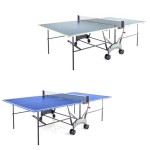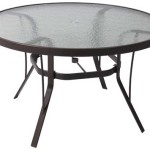How to Grow Vegetables in Containers: A Comprehensive Guide
Growing vegetables in containers offers various advantages, including space-saving, versatility, and accessibility. Whether you have a small balcony, a patio, or a sunny windowsill, container gardening allows you to cultivate your own fresh and nutritious produce. Here's a comprehensive guide to help you get started:
Choosing the Right Containers
Select containers that provide sufficient space for your plants to grow and establish a strong root system. Consider the mature size of the vegetables you plan to grow. Drainage holes are crucial to prevent waterlogging and root rot. Materials like plastic, clay, terracotta, or fabric pots are all suitable options.
Selecting the Best Soil
Use a high-quality potting mix specifically formulated for container gardening. These mixes are typically lightweight, well-draining, and rich in organic matter. Amend the soil with compost or manure to enhance fertility and improve soil structure.
Planting Your Vegetables
Follow the recommended spacing guidelines on the seed packets or plant tags to ensure proper air circulation and prevent overcrowding. Dig a hole in the potting mix large enough to accommodate the root ball. Carefully transplant the seedlings, gently spreading the roots and ensuring the soil covers them well.
Watering and Fertilizing
Water your container vegetables regularly, especially during hot and dry weather. Allow the top inch of soil to dry out before watering again. Use a diluted liquid fertilizer every few weeks during the growing season to provide the plants with essential nutrients.
Sunlight and Temperature
Most vegetables require at least 6-8 hours of direct sunlight daily. Choose a location where your containers will receive ample sunlight throughout the day. Protect your plants from extreme temperatures by providing shade during the hottest part of the day or moving them indoors if there's a risk of frost.
Pest and Disease Control
Regularly inspect your plants for any signs of pests or diseases. Use organic or chemical pest control methods as necessary, following the instructions carefully. Preventive measures like crop rotation and companion planting can also help minimize pest and disease problems.
Tips for Success
- Rotate your containers regularly to ensure even sun exposure.
- Mulch around the plants to retain moisture and suppress weeds.
- Harvest your vegetables at the appropriate time for the best flavor and nutritional value.
- Consider using trellises or cages to support climbing vegetables like tomatoes and cucumbers.
- Enjoy the satisfaction of growing your own fresh and delicious vegetables in containers.

Vegetable Container Size Standards With Chart Ponics Life

Guide To Container Sizes Which Size Should I Use Growing In The Garden

Guide To Container Sizes Which Size Should I Use Growing In The Garden

Vegetable Container Garden Guide Growin Crazy Acres

Quickstart Guide To Container Vegetable Gardening Lovely Greens

Quickstart Guide To Container Vegetable Gardening Lovely Greens

Container Gardening For Beginners A Guide To Growing Your Own Vegetab Paper Herald

Guide To Container Sizes Which Size Should I Use Growing In The Garden

Quickstart Guide To Container Vegetable Gardening Lovely Greens

Vegetable Gardening A Beginner S Guide Nc State Extension Publications
Related Posts








